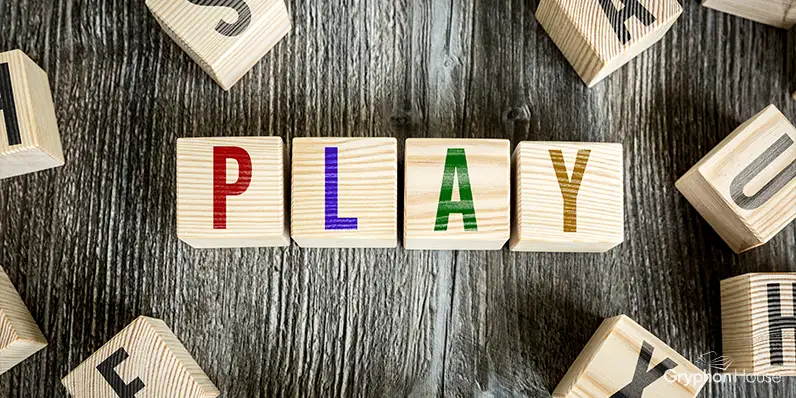
Educators, parents, family members, and researchers across the world agree that children love to play and they learn through play. If all of these people involved in children’s lives know this fact, then why is play taking a back seat in the lives of young children?
Two reasons are to blame for this decline in play time and increase in passive and sedentary activities: technological changes increasing children’s screen time and the belief that time is wasted when children play. As a result of this change and belief, play is being pushed out of children’s lives, even though it is an indispensable context and process for learning.
So, as the school year kicks back into motion, add some time for play into your curriculum. By using Planning for Play: Strategies for Guiding Preschool Learning, you can come to understand the value of both free play and guided play in preschool children’s learning and development. You will be shown anecdotes that explore the possible ways children play, what they can learn from their self-motivated engagement, and how you as a teacher can support that learning.
To further clarify the importance of incorporating play into children's lives, here are six aspects of children’s lives that play has an impact on.
The Social-Emotional Domain: Establishing Friendly Peer Relationships
As children play, they learn how to engage in social problem solving. The social problems that children encounter as they play include how to share limited resources, how to enter an in-progress play situation, how to negotiate who will play which role in a pretend situation, and what twists and turns the plot will take as they act out their ideas. These skills contribute to the quality and pleasure of children’s friendships and their peer interactions.
The Language and Literacy Domain: Building Vocabulary
Researchers David Dickinson and Joy Moreton demonstrate that the amount of time young preschoolers spend talking with one another during pretend play is predictive of the size of their vocabulary later when they are in kindergarten. Greater vocabulary development enables children to think in expanded ways about new concepts they are learning, and research shows that preschoolers’ vocabulary predicts their reading comprehension in elementary school. This is a significant connection. After all, understanding what we read is the ultimate purpose of reading.
The Mathematical Domain: Classification
During the preschool years, children develop and practice their ability to classify objects—as well as sounds, tastes, and ideas—according to traits they have in common. Classification involves comparing, contrasting, and grouping. Classification skills are critical building blocks for learning other important mathematical concepts later on. During play, teachers can guide students to classify the materials they are playing with, or students may begin classifying materials on their own, such as a child classifying vehicles into a construction vehicle and non-construction vehicle group.
Physical Development and Well-Being
The time children spend outdoors is at an all-time historic low. Research suggests that the reasons for this include the lure of electronic media, parental fears about safety, and educational policies with a narrow focus on teaching academic skills through didactic methods. Outdoor physical play is important, as it provides children with benefits that cannot be readily provided through other means. Vigorous physical activity helps to prevent obesity. It increases lung function; contributes to muscle, bone, and joint health; and strengthens the heart. Vigorous physical play also increases the flow of oxygen-rich blood to the brain, which benefits brain function.
Imagination and Creativity: Symbolic and Flexible Thinking
Imagination and creativity are increasingly seen as crucial tools for thriving in a future likely to be categorizes by rapid technological and social change. Young children seem to have natural tendencies to be out-of-the-box thinkers, and the early childhood years are an important time to protect and nurture children’s capabilities for imagination and creativity.
Motivation
Because the direction of play is, by most definitions of play, under the child’s control, play is highly engaging for children. In both free play and guided play, the children control the direction of the play—within appropriate limits of rights and safety, of course. In free play, the teacher provides the environment, the freedom, and the time. In guided play, the teacher takes a more direct role in setting up a situation in which children are likely to encounter and grapple with particular concepts or skills. Both forms of play are important, and both are intrinsically motivating for young children.
Author(s)Kristen Kemple
A graduate of Western Carolina University with a BA in English, Brianna served as a marketing and editorial Intern with Gryphn House in the Summer 2018.
Topics: